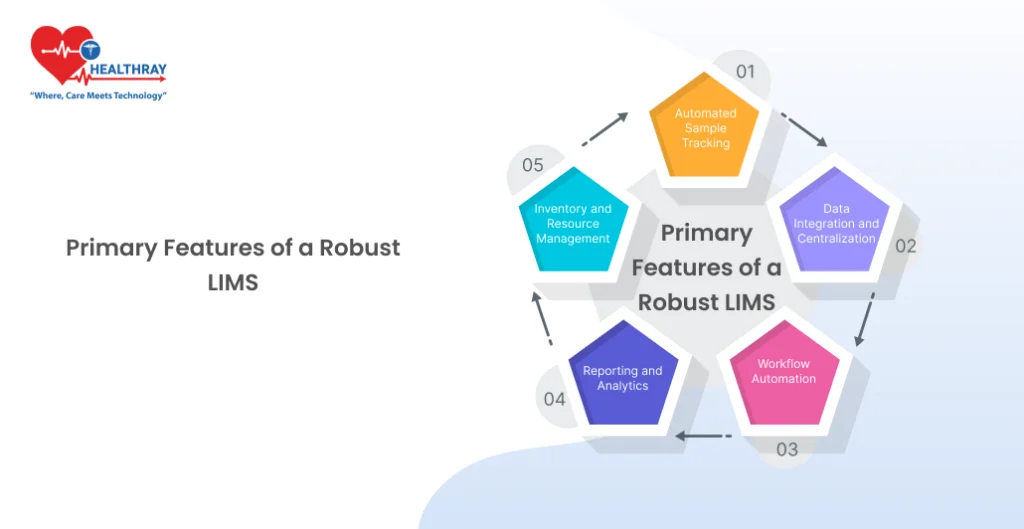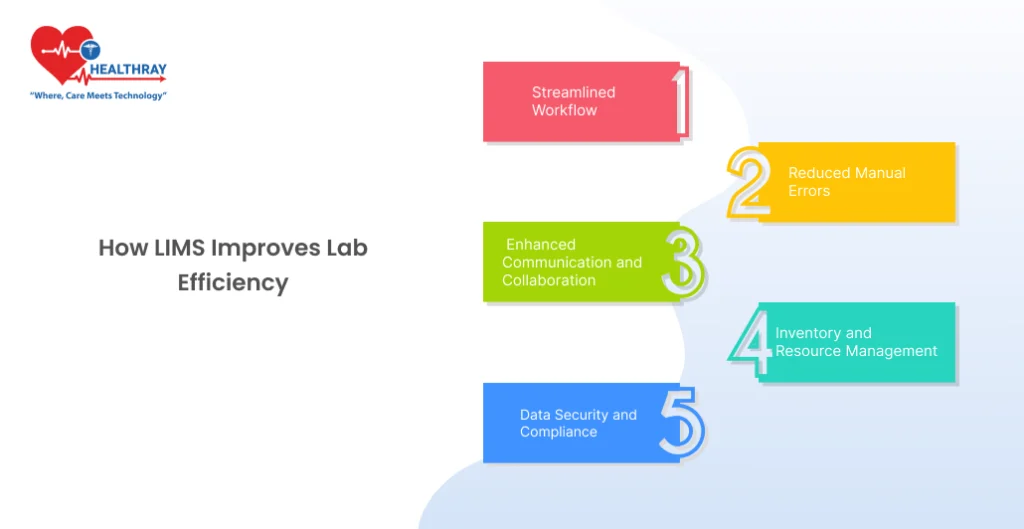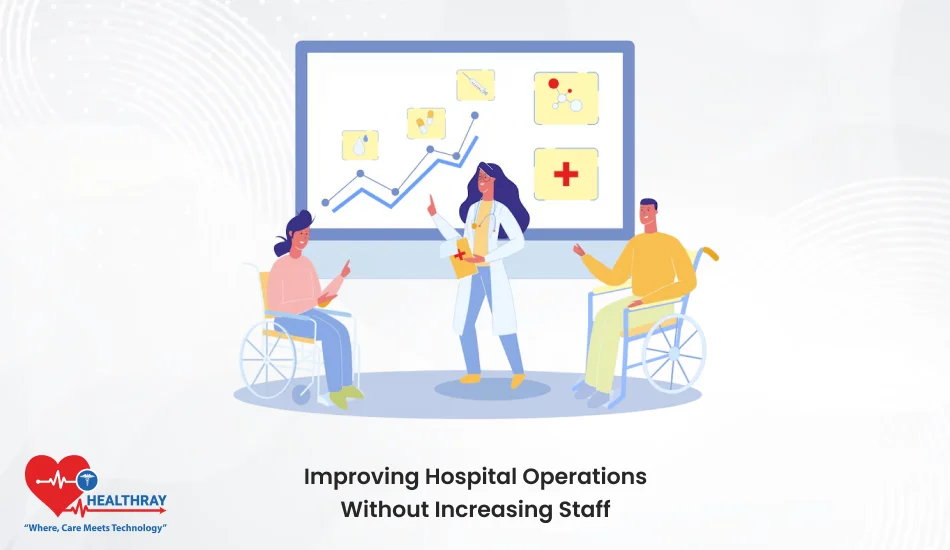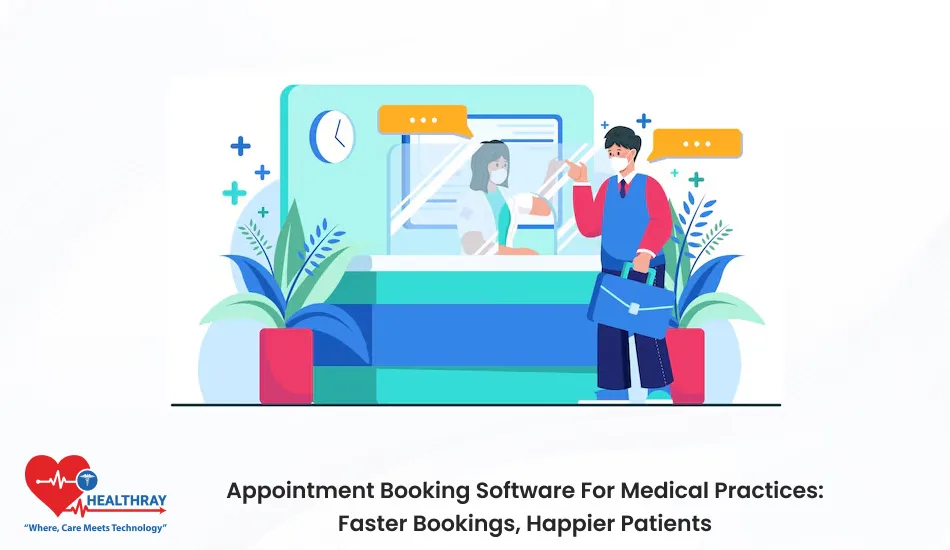Why can’t labs work harder, but smarter? Efficiency is crucial for lab managers and technicians. In addition to accuracy of execution of tasks even at a pace that is rapid, an effective laboratory is also efficient. However, obtaining this balance remains challenging with conventional methods. It can be achieved by the help of a Laboratory Information Management System (LIMS).
An ideal LIMS can standardise the whole laboratory procedure. It can all process samples, improve workflows, track compliance, and reduce human errors. Using this paradigm, laboratories will incrementally transition from a results-driven, deep interaction manual labor methodology toward an automated data-driven methodology, which will become deeply embedded in the routine of the work itself. It accounts for a large part of the high-volume-low-sample problems that the pathology laboratories are facing and transforms them into problems that can be solved, and, similarly, addresses many complex data problems at the clinical-development stage.
In this short review, we provide an explanation of what is needed for a LIMS as well as the inherent, and practical utility and uses of LIMS in the laboratory. In this manner you will learn. What are the criteria for choosing an appropriate LIMS, how to inject the LIMS into a legacy system, and how to navigate the challenges of its implementation.
Ready to watch a LIMS toppling over the shoulder of laboratory productivity, right? Let’s get started.
LIMS is a laboratory information management system and What it means for labs now.
The basis of an effective, contemporary laboratory practice is a Laboratory Information Management System (LIMS), which is far from just a data management package. Essentially, a LIMS is a scheduler, tracker and controller of data, samples, workflows, and related lab functions. In this context, big data can be handled by lab managers and technicians, without distorting nor violating correctness and compliance rules.
Key Benefits of a LIMS
Improved Data Accuracy: An effective LIMS minimizes human error, and as a result, labs are able to minimize errors in sample taking and test results. Since automated data entry and data validation have vastly reduced the number of errors in the process of transcription, this is of paramount importance in disciplines such as pathology or clinical research.
Enhanced Sample Tracking: In the laboratory every sample under study undergoes several stages and procedures. A LIMS provides an absolute audit trail, stating every stage from receipt to analysis and to storage, which means tracking and retrieval of information is very simple when needed.
Regulatory Compliance: Strong regulatory guidelines are often required to be followed in a wide range of fields, especially within the healthcare, pharmaceutical, and pathology fields. LIMS systems adhere to these rules in their entirety by tracking an entire history record and by ensuring reliable data provenance and security throughout.
Role of LIMS Across Different Lab Types
The greatest functionality of a LIMS lies in the flexibility of the system to almost any place in the laboratory. Patient samples are tracked at every step from point of collection to point of use for laboratory testing and reporting in laboratory workflow. Although relevant to studies in both settings, management is the highly sophisticated datasets with which the state of the inventory can be tracked, and thereby in turn dictates the optimization of experimental workflows. [LM] In clinical laboratories, a LIMS may offer the correct dispersion of sample data to the correct channels and solve the issue created by intradepartmental communication.
Hence, a LIMS is, inherently, of great importance to the inherent success and robustness of a laboratory insofar as it makes available, e.g., data integrity and adherence. The end result? Extension of time to tasks which have meaning to the laboratory, and the reduction of time on tasks which have no purpose.
Primary Features of a Robust LIMS

Automated Sample Tracking
For instance, sample manual tracking may be susceptible to, e.g., the lack of samples, sample misidentification, or reporting errors. A LIMS allows automated recording of sample history with the ability to record and label every sample from entry into the specimen workflow. Laboratories can identify the samples, confirm the status of the samples, and extract the data they want via barcode scanning and electronic record holding.
Data Integration and Centralization
Labs are outlined by high amount of data, and for the most part by data from other instruments and modality. A LIMS extends this knowledge and enables it to be placed in a unified system with easy access and management. This unified approach simplifies data handling, ensuring that everyone in the lab is working with the same information and reducing the chance of duplicate records or misplaced data.
Workflow Automation
A LIMS can automate routine tasks, from sample logging to administration of laboratory tests and simple reporting. Using automation, lab staff free up time previously spent on repetitive tasks, which can be better used for more demanding tasks, for example, for processing results and specialist testing.
Reporting and Analytics
A powerful LIMS provides built-in reporting and analytics tools. These tools permit laboratory managers to create highly specific measures of the timeliness of work towards processing samples, error rates, and utilisation of resources. Analytics has the potential to be applied by laboratories to identify bottlenecks, measure performance, and implement data-driven strategies that will lead to continuous-incremental enhancements.
Inventory and Resource Management
It is also an advantage of an effective LIMS that it can enable inventory and supply trace. All of these lifecycle management, maintenance, and production personnel can be tracked by LIMS systems, and in fact LIMS systems can be designed to notify the user that items are low/running out of stock. In a clinical pathology and clinical laboratory environment where a trustworthy source of materials is required, it is very useful.
These are the core functionalities that allow laboratories to operate with greater accuracy, speed and consistency. Lab teams can focus as much as possible on their strengths, that is the execution of highly accurate and fast analysis, with the help of a LIMS to this end as, e.g., the management of sample can be incorporated by means of a LIMS but also the management of the usage of particle agents.
How LIMS Improves Lab Efficiency?

Efficiency in the lab is not simply about speed, it is about developing an optimized workflow with the minimum number of errors while achieving the maximum throughput. There is a direct influence of a LIMS that it can be used to automate as many steps as possible, that is to invest time and, consequently, in an optimum use of the available funds. Here’s how:
Streamlined Workflow
The use of a LIMS enables the laboratories involved to actually establish a structured workflow that directs the steps of the process of each sample. The configuration not only reduces the error due to stepping in the wrong direction, but also ensures that all samples are processed in a consistent manner. Pathological and clinical laboratory environments with large sample volumes can be optimally managed with low bottlenecks and fast turnaround times.
Reduced Manual Errors
Manual input of data from test results to a logbook is prone to errors that could impact test results, patient recovery, or research outcomes. A LIMS automates data entry and sample acquisition, thereby reducing opportunity for human error. Barcode scanning and electronic record keeping which are of equal significance in the areas of pathology and clinical research alike, allow for reliable labelling and tracking of samples, to thereby support data integrity.
Enhanced Communication and Collaboration
Communication among teams or departments in an environment with multiple teams or departments is critical to prevent mistakes and backlogs. Indeed, a LIMS not only stores data in a form that is directly understandable to any personnel that handles the sample along its whole path through the linear (how the sample behaves through the sample’s trajectory) and nonlinear (the sample itself and its output, i.e., the image’s internal architectures and thus the resulting visual effects) structures. This usability enables collaborative work which in turn leads to quicker decision making and a more seamless transfer of processing steps.
Inventory and Resource Management
LIMS systems record information of the lab stock, encompassing reagents up to (and even including) equipment, in order to always provide the resources. If there is a LIMS to enable the inventory control, it can automatically alert lab managers when the inventory is insufficient, preventing them from ordering too late and hence interrupting the workflow. In labs that use time-limited and sensitive samples, this preventive approach prevents a bottleneck due to stock-out.
Data Security and Compliance
Good quality LIMS comes with inbuilt security infrastructure that can be used to protect confidential information from malicious access which is particularly relevant in laboratory that deals with confidential patient data. Adherence to standards, including HIPAA, CLIA and GLP are critical to a variety of labs and a LIMS can aid by providing security and compliant data storage while also providing audit trails which are crucial to regulatory reporting.
Automation of these critical functions results in increased lab productivity for all workers and frees them from routine tasks, allowing a focus to be put on higher-priority items while accuracy and compliance, uniformity are ensured. The ultimate result is a laboratory that runs as a self-regulating device and is delivering faster and more precise speed.
Real-Life Case Studies: LIMS Success Stories\
The use of real-world cases can offer a valuable perspective on how there might be a shift in the way laboratory work is conducted due to the use of a LIMS. Following is three case studies demonstrating the advantages of using a strong LIMS in various types of laboratories.
Case Study 1: A Pathology Lab’s Transformation with Automated Sample Tracking
- Enhanced Sample Tracking: Each sample was recorded from collection to storage, thereby reducing the incidence of delayed sample mislabelling by over 50%.
- Faster Turnaround Times: Thanks to better workflow, the mean time for reporting of pathology reports decreased by 30%, which in turn facilitated faster diagnostics and better patient care.
- Reduced errors from human intervention while taking samples which, in turn, increased reporting accuracy confidence.
Case Study 2: Increasing Efficiency and Compliance in a Research Lab
A research lab undertaking long-term studies experienced problems with managing data and meeting the stringent regulations of data integrity. A LIMS was installed to address the issues by:
- Data Centralization: All the information of the project was stored in one central database, which made it available to team users and ensured standardization.
- Compliance Support: The LIMS also produced audit logs and provided secure data storage, and thus assisted the lab in maintaining compliance with legal requirements for data integrity, for instance GLP.
- Streamlined Workflows: The automated sample recording and resource monitoring saved 40% time effort administratively. This meant the researchers could use this time to be allocated for actual analysis and setting up of studies.
Case Study 3: Improved Resource Management in a Clinical Lab
A clinical laboratory had very meager resources at hand and managed reagents and consumables. As a result, it used to run into a shortage from time to time. After introducing LIMS into its workflow, it benefited by:.
- Real-Time Inventory Tracking: LIMS issued low stock warnings to enable timely replenishment and prevent workflow disruption.
- Resource Optimization: the laboratory is aware of all locations where reduction of potential wastes should be adopted since consumption of resources is tracked at all times; thus, it can easily conserve 20% of consumptions from all the supplies.
- Work Stream Efficiency: the need to physically re-verify inventories in manual books was eliminated and thus consumed working time of the personnel.
All the case studies also demonstrate how a LIMS can be applied to bridge at least some of the pain points, including sampling tracking, compliance and inventory management, etc. Optimized LIMS workflows can streamline and therefore lead to improved quality and efficiency of laboratory operation.
Conclusion
All functionalities required in the lab’s preparation and for protection of data can be accessed by a laboratory information management system. It is possible to gain enhanced productivity and enhanced accuracy, and thus ready for future growth, with the right investment in the system. Accessible use of the right kind of LIMS to an application will result in better work flow and a well-ordered laboratory.
How prepared are you to work hard to reform productivity in your laboratory? The Hospital Management System one may need could very well be the help needed to adequately meet the exigencies of times and provide sustainable success.





